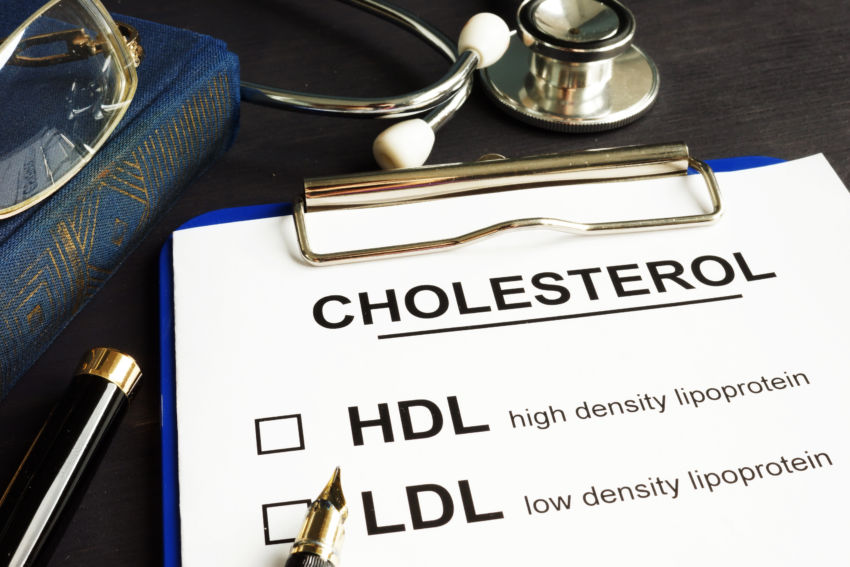Unfortunately, cardiovascular disease (CVD) is one of the most misdiagnosed and mistreated conditions in medicine. We’ve learned a tremendous amount about what causes heart disease over the past decade, but the medical establishment is still operating on outdated science from 40-50 years ago.
Chris Kresser, M.S., L.Ac.
Heart disease is the world’s leading cause of death, taking an estimated 17.9 million lives each year globally according to the World Health Organisation (2017). One of the most important blood tests that is used in medical practice to assess heart disease risk is a lipid panel, which typically includes your cholesterol levels, triglycerides, HDL and LDL. As you will learn in this article, there is much more to assessing heart disease risk than simply measuring total cholesterol, LDL or HDL levels and high cholesterol does not necessarily mean a higher risk for heart disease. Here is what you need to know about accurately assessing heart disease risk and deciding on a plan of action.
Cholesterol explained
Cholesterol is a sterol (a combination of a steroid and alcohol) and it is essential to life. It plays a crucial role in cell membrane structure and function, it is a hormone precursor, required to make vitamin D and bile acids, it makes up 20% of myelin (the sheath that covers and protects nerve cells), determines synapse formation in the brain, helps to maintain intestinal barrier integrity, and prevents oxidative damage. We are generally worried about high cholesterol levels but given the important functions of cholesterol in the body, it is obvious that low levels can contribute to disease as well.
We obtain about 20-25% of circulating cholesterol from our diet but the majority of it is produced by the liver and that internal production goes up or down depending on how much cholesterol is consumed through food. This way the body tightly controls levels of cholesterol.
LDL and Heart Disease Risk
Because cholesterol is fat soluble, it needs a transporter to be carried around in the blood. These transporters are called apoproteins. When these transporters are bound to fats, they are called apolipoproteins. Low Density Lipoprotein (LDL) and High Density Lipoprotein (HDL) are the lipoproteins that are measured as part of a standard lipid profile test to assess the risk for heart disease. The numbers on a standard lipid tests reflect the total amount of cholesterol that these transporters are carrying and the conventional way of interpreting lipid markers is that HDL is deemed to be the “good” and LDL the “bad” cholesterol.
As it turns out, measuring the amount of cholesterol is not enough to determine whether you are at risk for heart disease. As with most health issues, there are many factors and underlying imbalances to consider and taking cholesterol lowering medication without doing some deeper investigation is a fraught strategy for optimal health and wellbeing.
Chris Kresser, ND who has written extensively on the subject of cholesterol, uses the analogy of boats in a river: LDL cholesterol can be compared to the amount of cargo that the transporter boats are carrying. A more important factor to consider is the number of boats that are in the river. The more “boats” there are, the higher the chance that some of them will start crashing into and damaging the arterial walls. It is important to note that it is possible to have low LDL cholesterol (as measured in a conventional lab tests) and still have high numbers of LDL particles, or to have high LDL cholesterol and low numbers of LDL particles.
This is how cholesterol can cause heart disease: the inner wall of blood vessels is made up of a single layer of cells, the endothelium. When LDL particles crash through this barrier and into the sub-endothelial space, immune cells launch an inflammatory response. Some LDL particles are retained within the artery wall and when these particles are exposed to free radicals, they become oxidized, which triggers another immune response that causes more build-up of LDL particles, immune cells, foam cells and damage to the artery wall.
Ultimately this process results in the formation of atherosclerotic plaque and a fibrous cap, which is a protective layer of fibrous tissue that protects lesions in the artery wall. This results in the narrowing of the blood vessels and over time, plaque can rupture and dislodge from the artery wall, forming a blood clot that can obstruct blood flow to the heart.
The two main factors that play a role in this process are the number of LDL particles in the bloodstream (1) and oxidation of the LDL particles (2).
LDL Particle Number
How do you check LDL particle numbers? This requires some advance testing. The test to ask for is called LDL particle number (LDL-P) or NMR Particle Test. Unfortunately, this test is not yet available everywhere. If this is the case where you live, the next best option is to measure ApoB.
ApoB or Apolipoprotein B is a surrogate marker for LDL particle numbers. There is one ApoB on every LDL and VLDL and because LDL has a longer half-life than VLDL, an estimated 95% of all ApoB molecules are on LDL particles. By measuring ApoB you therefore have a good estimate of the number of LDL particles. You want this number to be below 60 mg/dL or 55 mg/dL if you are in a high-risk category.
There are other tests that help map out heart disease risk, such as lipoprotein(a)*, blood glucose levels, inflammatory markers, and fasting insulin but more on that later.
*Lipoprotein(a) is an LDL particle to which a protein called apolipoprotein(a) is attached. Its function is to pick up oxidized lipids (highly toxic molecules) from the bloodstream and return them to the liver. Lipoprotein(a) level is an independent risk factor for CVD and is thought to be almost entirely influenced by genetics.
LDL Oxidation
Oxidation of LDL particles occurs when there is a high amount of oxidative stress in the body and poor antioxidant status. Oxidative stress can result from a diet which is high in processed foods, sugar, inflammatory foods, excess alcohol, as well as smoking, stress, infections and toxins or environmental factors such as radiation and pollution.
Genetics and metabolic function can play a role too: certain genetic mutations can impact the regulation of ROS (reactive oxidative species) within the body. High levels of blood glucose can turn LDL particles into glycated LDL, which when exposed to ROS become oxidized. Antioxidants counter oxidative stress by “mopping up” free radicals. The body produces its own antioxidants and antioxidants also come from our diet.
What if LDL Particle Numbers are high?
If advanced lipid profile testing has revealed that your LDL particle number is high, it is important to consider underlying causes for this.
The number of LDL particles is influenced by several factors. There are two main causes:
1. Insulin and leptin resistance (i.e. metabolic syndrome, blood sugar dysregulation, high level of triglycerides, being overweight)
2. Genetics – here’s where Familial Hypercholesterolemia comes into play as well as other genetic mutations like APOE4. Familial hypercholesterolemia is caused by genetic mutations that influence LDL receptor production or the production of apolipoprotein B, which is the part of the LDL particle that binds to the LDL receptor. An estimated 1 in 300 to 500 people have one copy of the mutated gene and these people have high levels of total cholesterol (ranging from 350 and 550 mg/dL) and high LDL particle numbers.
The APOE gene is involved in making a protein called apolipoprotein E. People who carry at least one copy of the APOE4 allele are less able to clear LDL particles from circulation (3).
Other underlying conditions that can influence LDL particle numbers are:
3. Impaired thyroid function
4. Infections (e.g. gut infections)
5. Intestinal permeability (which is linked to a translocation of Lipopolysaccharides (LPS), a bacterial endotoxin – a big contributor to inflammation)
6. Toxins
Outlining a plan of action
If your standard lipid profile lab test shows consistent out-of-range levels of cholesterol, LDL, HDL, or triglycerides, you want to consider doing some deeper investigation:
1. Start with some advance lipid profile testing and look at LDL particle numbers or Apo(B) and lipoprotein(a) as well as markers of insulin resistance.
2. Consider additional advanced testing to determine your risk for CVD more accurately: genetics, inflammation, metabolic function, thyroid function, oxidative stress, antioxidant status, underlying gut issues, gut microbiome composition, heavy metals and other toxins – regular lab testing can assess some of these factors and there are great functional tests available that look at all of this and more.
3. Address any underlying imbalances with a comprehensive health building strategy: address blood sugar dysregulation, oxidative stress, support antioxidant status, restore gut health, improve detoxification processes, support the liver and reduce your toxic load. Nutritional interventions, targeted supplementation and lifestyle measures are a powerful tool in addressing all of these underlying imbalances and in improving LDL particle numbers and the exact strategy should be guided by your unique underlying causative factors.
If you are ready for a personalized health building strategy aimed at lowering cardiovascular disease risk, please set up a free discovery call with me here so we can talk about making this possible.
Be Well.
Monique


